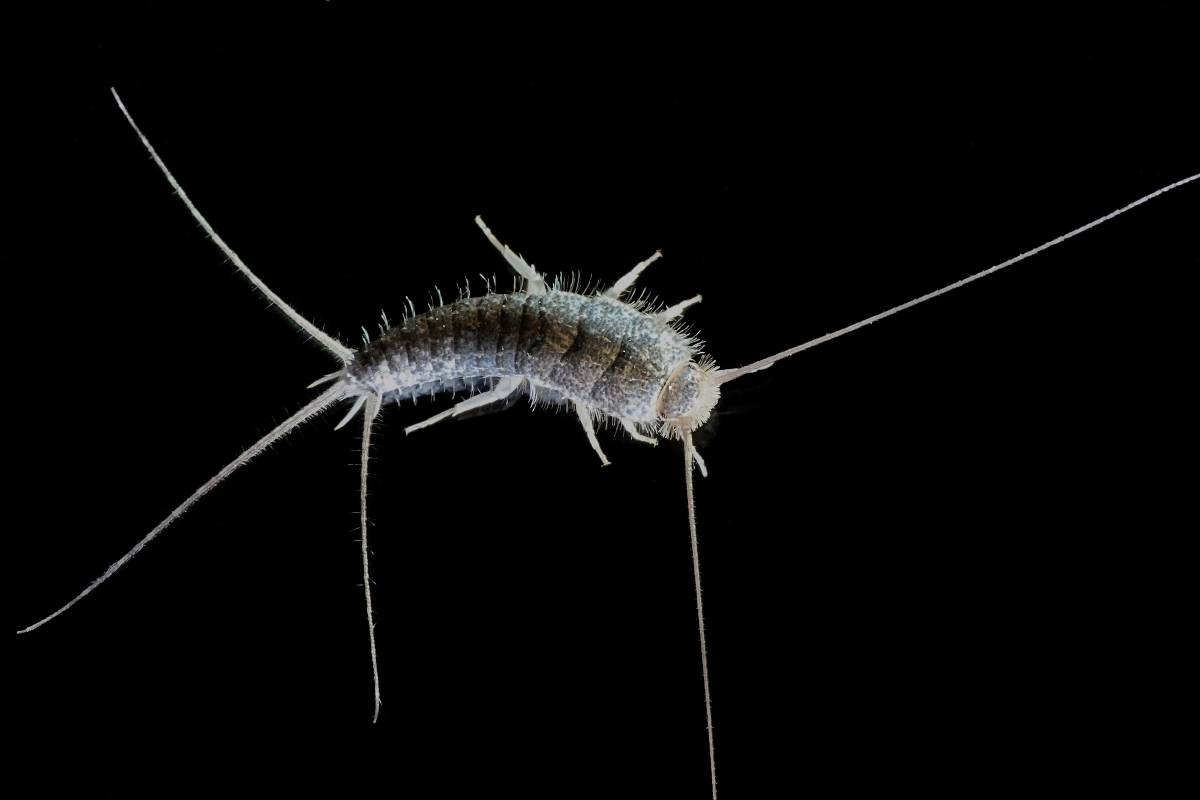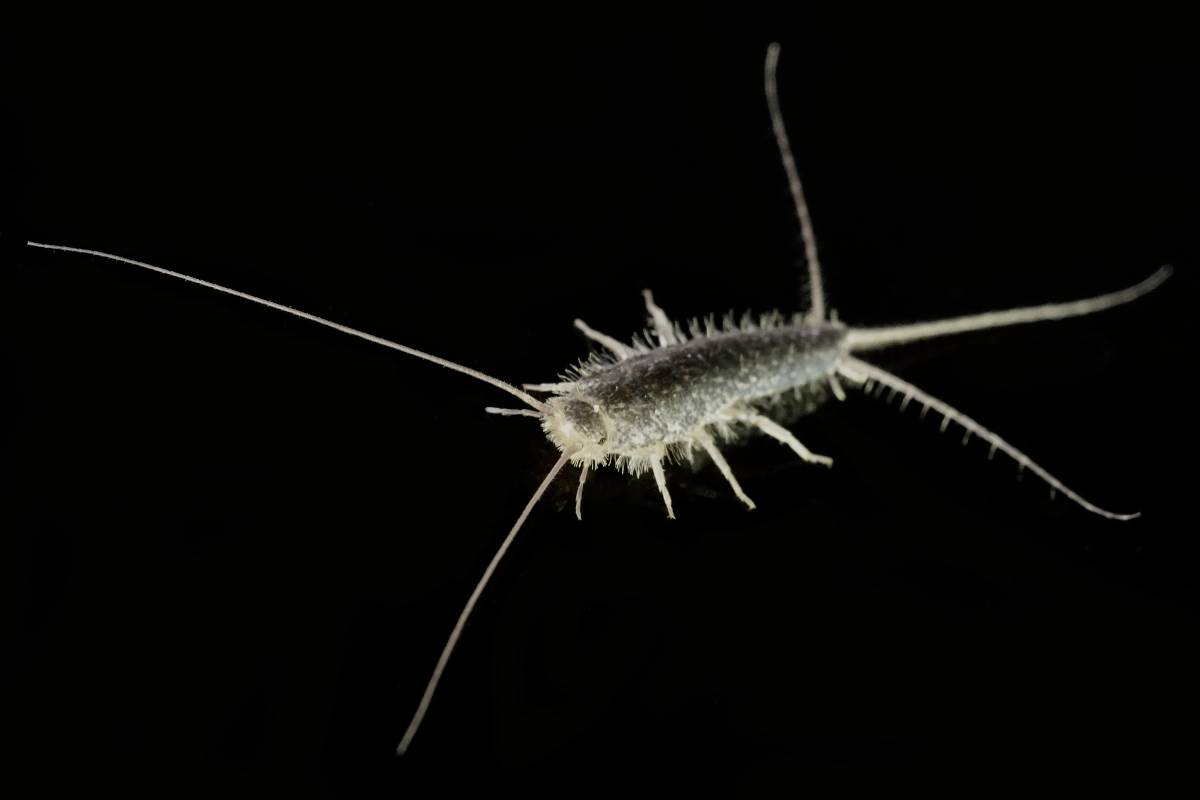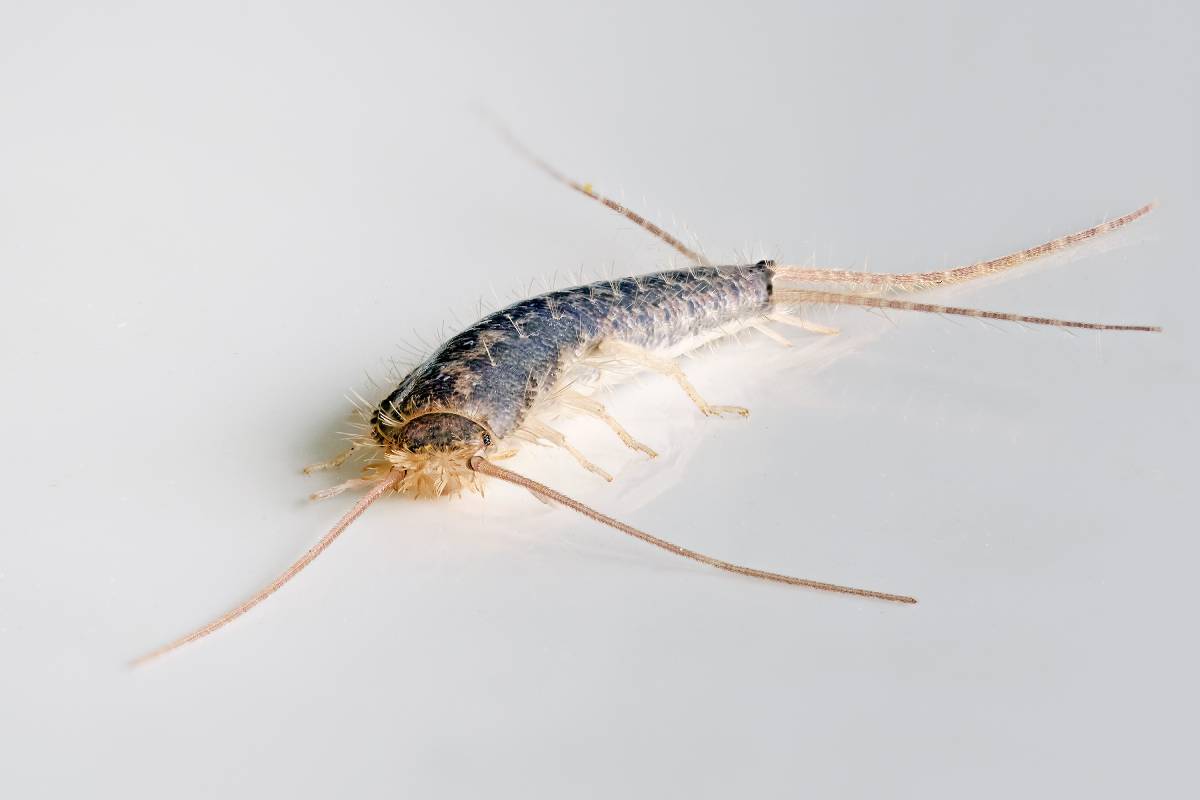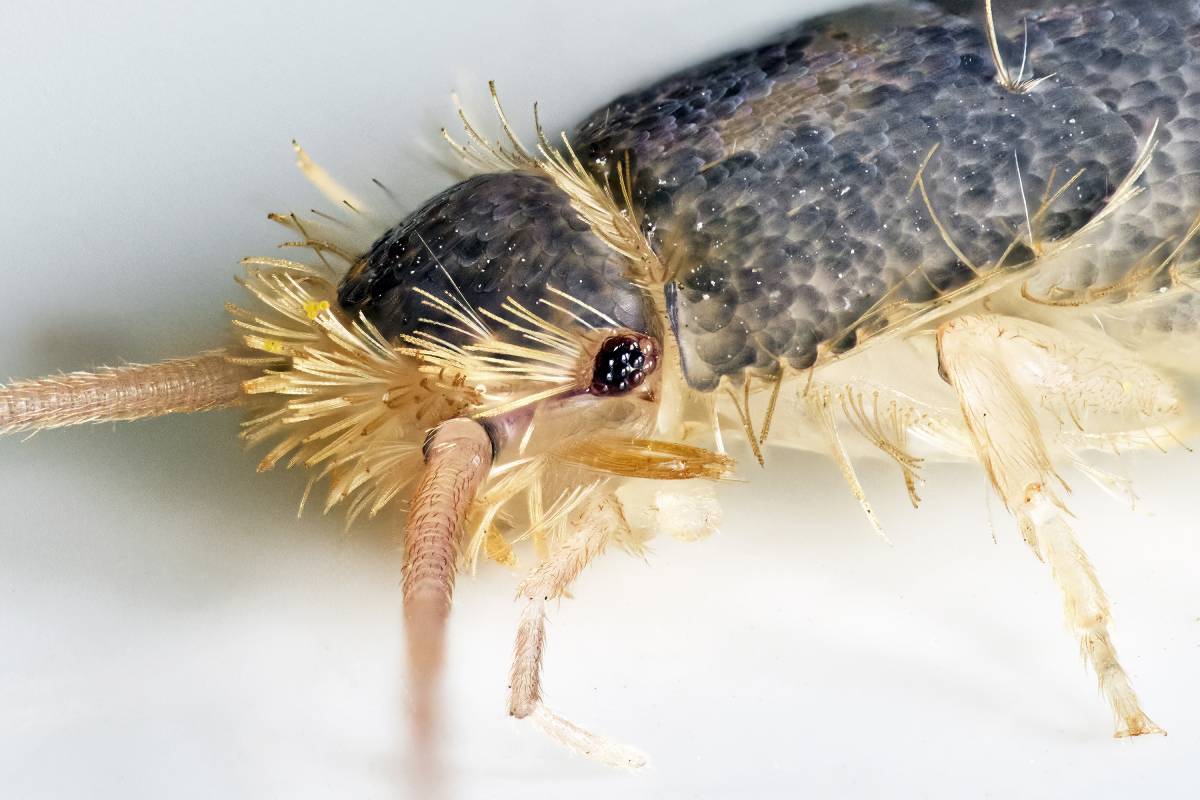Silverfish are small insects known for their shiny silver appearance, complete with scales and antennae. Despite lacking wings, they possess a soft body covered in delicate scales reminiscent of a fish.
With a flat and oval-shaped body, adults typically measure around ¾ inch long, featuring two antennae and three tail projections. While similar, firebrats, another insect species, tend to be darker and display a mottled grey colouration.
Preferring darkness, silverfish spend their days hiding away, avoiding direct sunlight. When disturbed, they swiftly dart to seek out a new dark hiding spot.
Female silverfish continuously lay eggs once they reach adulthood, depositing them in crevices and cracks throughout homes. These eggs hatch within three weeks, and young insects mature into adults within four to six weeks.
Young silverfish resemble their adult counterparts but are smaller and white. These creatures boast impressive longevity, with lifespans ranging from two to eight years. Additionally, they can endure extended periods without sustenance, surviving up to a year without food. However, they are highly dependent on moisture, requiring high humidity levels for survival.
Thriving in damp, dark, and cool environments, silverfish populations can burgeon in new constructions with moist brick and stone. Commonly, they are found in basements, sinks, bathtubs, closet shelves, behind baseboards, bookcases, behind windows, and behind door frames.

What do silverfish eat?
Silverfish and firebrats are voracious eaters, consuming carbohydrates and protein-rich materials such as flour, rolled oats, dried meat, paper, cardboard, books, glue, vegetables, cereals, and dead insects.
Occasionally, silverfish may find their way into new homes through cardboard cartons, boxes, papers, and books sourced from infested locations.
- Moisture Magnet: Silverfish love moisture like bees love flowers. Your house might be a treasure trove of damp spots—think bathrooms, kitchens, basements, and even laundry rooms. These areas provide the perfect environment for silverfish to thrive. So, if you’ve got leaks, poor ventilation, or high humidity levels, it’s like rolling out a welcome mat for these moisture-loving bugs.
- Feeding Frenzy: Picture this: You’ve got stacks of old newspapers, cardboard boxes tucked away, and maybe even some forgotten books in the attic. Well, silverfish see these as their version of an all-you-can-eat buffet. These critters munch on starchy materials like paper, cardboard, glue, and even certain fabrics. So, if you’ve got plenty of these lying around, you’re practically inviting silverfish to feast.
- Cosy Hideouts: Ever notice how silverfish seem to prefer hiding in tight, dark spaces? That’s because they’re nocturnal creatures that love the cover of darkness. Cluttered closets, behind bookshelves, and under sinks provide the perfect hiding spots for them to retreat during the day and come out to play (or rather, hunt for food) at night.
- Easy Access: Silverfish are sneaky little bugs—they can squeeze through tiny cracks and crevices with ease. So, if your house has gaps around doors, windows, pipes, or vents, it’s like leaving the front door wide open for them. They’ll gladly take advantage of any entry points to sneak their way inside.
- Unwanted Hitchhikers: Sometimes, silverfish hitch a ride into your house without you even realizing it. They can tag along in cardboard boxes, potted plants, or even on your clothes if you’ve been in an area where silverfish are present. Once they’ve infiltrated your home, they’ll settle in and start exploring their new surroundings.

Now that you know why silverfish might be hanging out in your house, what can you do about it? Well, the good news is that there are steps you can take to show these uninvited guests the door:
- Dry it Out: Reduce moisture levels in your home by fixing leaks, improving ventilation, and using dehumidifiers in damp areas.
- Clean House: Declutter and tidy up to eliminate hiding spots and remove potential food sources like paper, cardboard, and crumbs.
- Seal it Up: Seal cracks and gaps around doors, windows, pipes, and vents to block silverfish from entering.
- Trap ‘Em: Use traps or baits designed specifically for silverfish to catch and remove them from your home.
- Call for Backup: If you’ve got a serious silverfish situation on your hands, consider calling in professional pest control to help you tackle the problem.
With these strategies in place, you can make your home a less welcoming environment for silverfish and reclaim your space from these unwanted intruders.
Are silverfish dangerous?
Silverfish are common household pests that can be found in damp, dark areas like basements, bathrooms, and kitchens. While they may look a bit creepy with their silver-grey colour and wiggly movements, they’re generally harmless to humans and pets. Let’s break it down with further information.
First off, let’s address the big question: Are silverfish dangerous? The short answer is no, they’re not dangerous in the traditional sense. Unlike some other pests like mosquitoes or cockroaches that can carry diseases or cause allergic reactions, silverfish don’t pose a direct threat to human health. They don’t bite, sting, or transmit diseases, so you don’t have to worry about them causing harm to you or your pets.
However, just because silverfish aren’t dangerous doesn’t mean they’re welcome guests in your home. These little critters are known for their voracious appetite for starchy materials like paper, cardboard, glue, and even certain fabrics. This means they can cause damage to books, wallpaper, clothing, and other items if left unchecked. While they’re not harmful to your health, they can certainly be a nuisance and cause frustration with their destructive feeding habits.
So, if you discover silverfish in your home, what should you do? The good news is that there are several steps you can take to manage and prevent silverfish infestations.

How to get rid of them?
Dealing with a silverfish infestation can be as tricky as tackling a cockroach problem. Combining different methods is often the most effective approach. Here’s a rundown of steps to take:
- Seal Your Food: Limit silverfish’s food sources by storing all edibles in airtight containers.
- Regular Vacuuming: Keep food confined to one area and vacuum carpets, floors, and furniture frequently to eliminate food debris.
- Reduce Humidity: Since silverfish thrive in humid conditions, use a dehumidifier in the basement and ensure areas like showers, sinks, and the laundry room remain dry. Plastic sheeting can help in dirt crawl spaces and attics.
- Yard Maintenance: Properly landscape your yard to facilitate water drainage away from your house. Maintain good window seals and seal cracks with caulking to prevent silverfish intrusion.
- Seal Cracks: Silverfish lay eggs in cracks and crevices, so sealing these openings can prevent egg-laying and hatching.
- Use Dusts: Apply insecticidal dusts like diatomaceous earth, boric acid, and amorphous silica gel in less frequented areas such as crawl spaces and attics. Sprinkle or spray these into cracks, ensuring they remain dry for effectiveness.
- Combination Insecticides: Employ residual sprays like propoxur, chlorpyrifos, and bendiocarb, which offer protection for up to 45 days. Follow up with short-contact sprays like pyrethrins in areas where silverfish are commonly spotted, focusing on cracks and hiding spots.
- Japanese Cedar Essential Oil: Consider using Japanese cedar essential oil (Cryptomeria japonica), which is proven to control silverfish.
Remember, insecticides are potent and can harm the environment. Always read and adhere to label instructions, and store products safely away from children and pets. For severe infestations, seek assistance from a professional pest control company.





